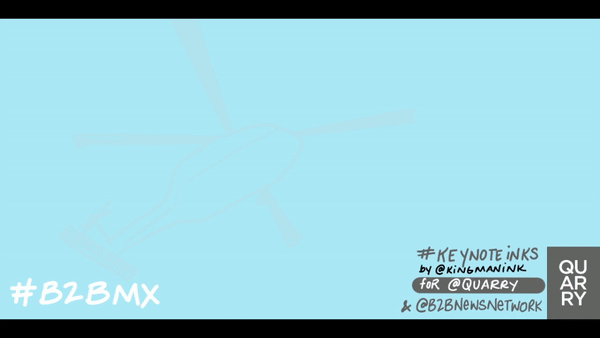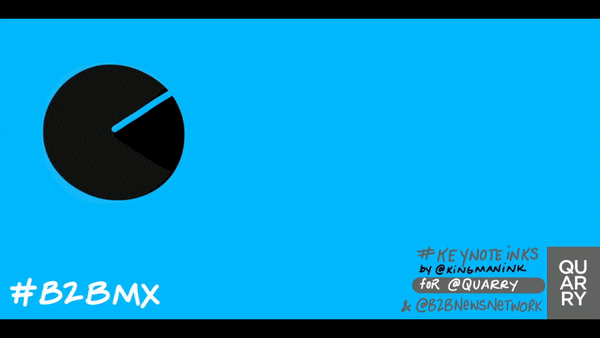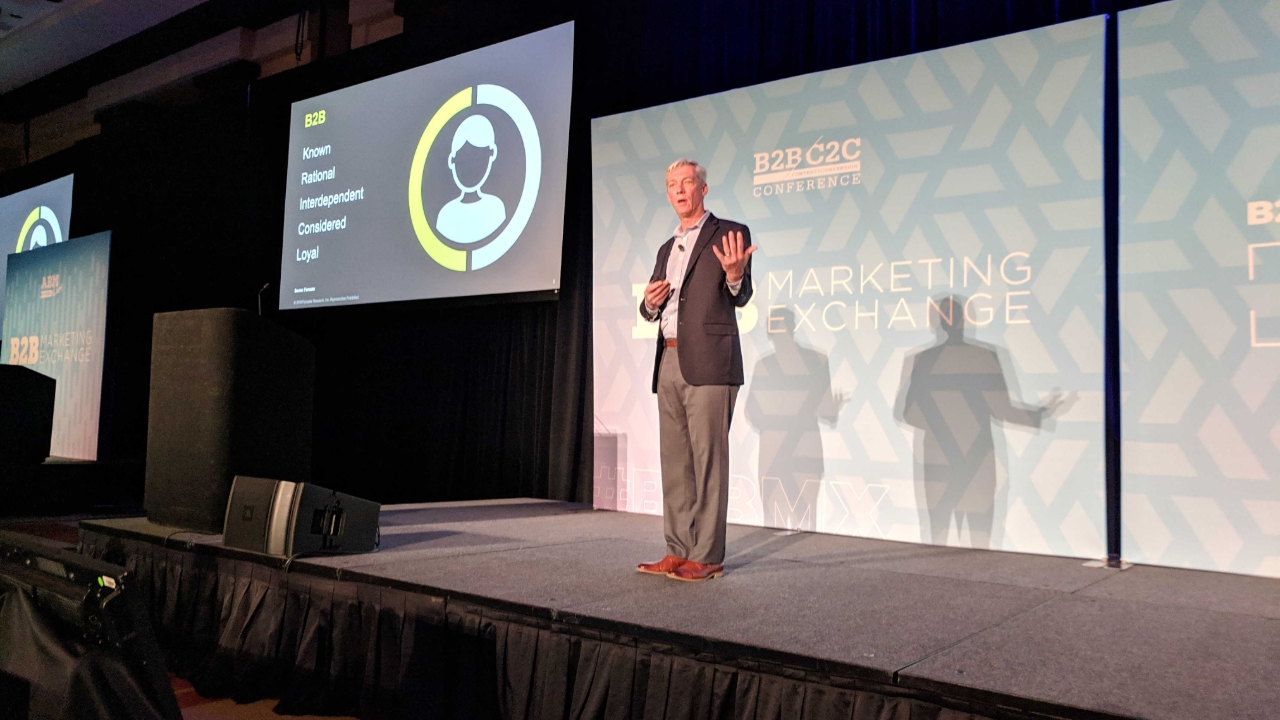Innovations in the B2B marketplace are endless. Most commonly, innovating means putting more control in the buyer’s hands. Therefore, B2B marketing and sales teams must focus their strategies on empowering buyers to meet their needs, while supporting them on their path to purchase.
This was the main theme of one of the last keynotes at the 2019 B2B Marketing Exchange in Scottsdale, Ariz. Steven Casey, Principal Analyst at Forrester Research, took the stage to share tips, research and strategies to not only become customer centric, but let your buyers take the reins by acting more as a helpful mentor in their journey.
“[There is a] shift in the balance of power from companies to customers thanks to the availability of technology,” Casey said during his keynote. “Consumers have all the information they need to make a purchase. It’s vital to put the newly empowered buyer at the center of everything we do. Our research shows that companies who do this well perform better financially.”
Casey continued that B2B buyers are showing more and more traits of the B2C consumer in their buying processes. There is more human emotion involved in the B2B purchase than ever before, and businesses must position their teams to accommodate those expectations.
“B2C companies are great at creating emotional connections with buyers since products are so similar,” Casey said. “Anonymity, emotion and fickleness are some consumer traits that are carrying over to B2B.”
Ultimately, Casey suggests that B2B marketing teams must take a customer-service-like approach to engaging and communicating with potential customers. This “helping versus convincing” mentality is what differentiates progressive B2B organizations from the laggards.
“Our job as B2B marketers are not to convince them to buy, but to help them buy,” Casey said. “Change the lens to see their needs through their eyes.”
Customer-Focused Brand Promises Correlate To Business Success
Casey shared Forrester research pertaining to how customer-focused brand promises have a direct correlation to a company’s customer success. Casey stated that 18% of B2B marketers said their companies lack a clearly articulated brand promise. For those that said they have a brand promise, nearly half (43%) of them were described as brand and/or product focused.
“Customers define your brand,” Casey said. “Marketers must think like customer service. They have to help customers help themselves.”
Casey added that this can be tied directly to business success. He noted that 70% of companies with customer-focused brand promises are exceeding revenue goals. In comparison, 61% of companies with product-focused promises miss revenue goals.

“Our job now as B2B marketers is to own more of the lifecycle by focusing more on conversation, versus capturing information and leads,” Casey said. “Don’t be ‘helicopter marketers.’ Your customers are in control.”
Casey noted a few tactics and strategies progressive companies are using to pivot their initiatives to be more customer serving:
- For companies using chat bots and other messaging tools, Casey said that “you must present them not as a Walmart greeter, but as a helpful shopper that is looking to provide more information if needed.”
- Get comfortable with anonymity. There are a variety of tools and tactics to understand anonymous buyer engagement and use that to provide better experiences that lead them to introduce themselves.
- Position buyers to binge, and not drip. In the Netflix era, content must be easily accessible and not controlled strictly by a nurture drip campaign. Remove friction by providing content that can be consumed at the buyer’s leisure.
- Cultivate customer advocates. Whether they are aspiring educators, validators, status seekers or collaborators, your current customer base is a solid foundation for building that community and customer-centric mentality that B2B businesses need today.
It’s Time To Break The Content Gates
The “great gate debate” was an ongoing conversation at the event, and Casey was among the large group of thought leaders that believe there is a certain time and place for gated content, but most of the time, it isn’t necessary.
“The contact-for-content model is very broken,” Casey said. “We must acknowledge the fact that [our customers] are in charge of the journey, and we can do that by not asking those form fill questions.”

Casey shared research showing that 81% of Millennials and Gen-Xers decide not to download content because they are required to fill a form out for it. He also added that half (50%) ultimately enter false information for these forms. Casey concluded that there are more pros than cons for offering free, easily accessible content to their audience.
“The less I gate, the more engagement I’ll create,” Casey said. “It’s about extending those conversations and ultimately helping them in their journey.”







